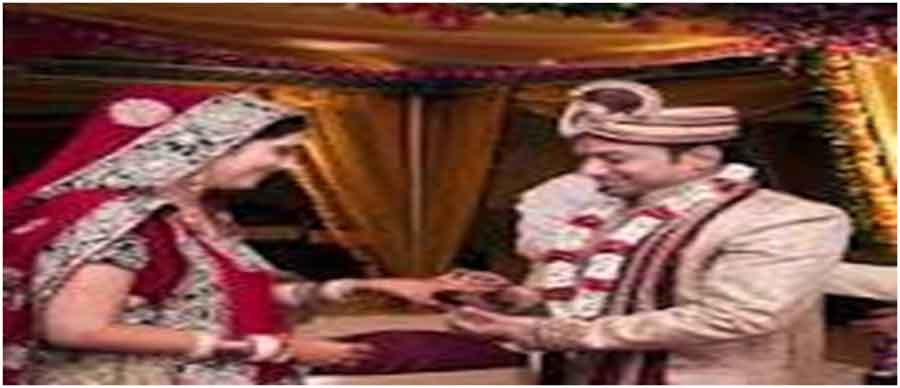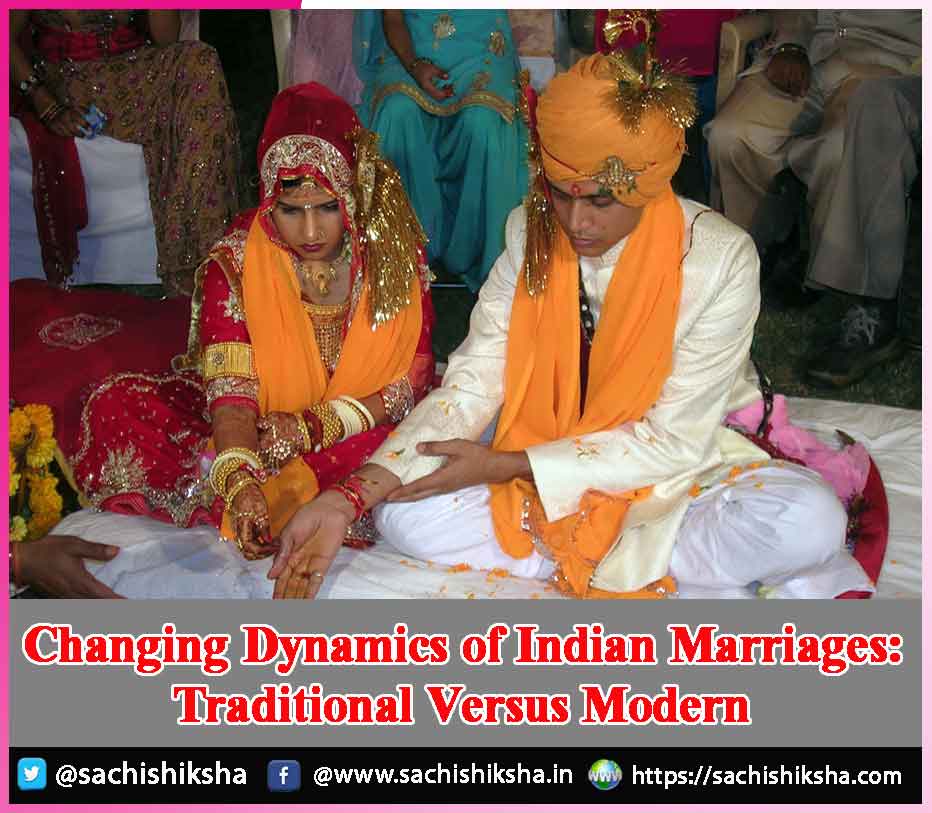Changing Dynamics of Indian Marriages: Traditional Versus Modern
Introduction: During the past few decades, the basic idea of an Indian wedding has undergone significant alterations. Nowadays, the date (wedding) is often honoured in an extravagant manner, with several kinds of ceremonies performed prior to, during, and following it.
The primary parts of modern ‘great fat Indian wedding’ include a large invitation list, a colorful and spectacular location, a costly feast, and a sequence of rituals. The twenty-first century has seen significant changes in the societal norm of wedding, and those accountable for those alterations include the young people for whom the relevance, value, and objectives of marriage have been entirely redefined. Even though we are unable to assert that marriage has diminished its appeal for young people, it has gone through significant modifications.
Table of Contents
The following are the most recently occurring changes in Indian marriage traditions.
Changes in the Field of Choosing:

Modern marriages are sometimes hosted in unconventional locations, such as outside locations or distinctive, creative places, whereas traditional weddings are typically performed in more traditional venues, such as churches or banquet halls. Modern weddings can be held in a number of settings, including outdoor venues, unconventional facilities like sheds or spaces, and even vacation weddings. Weddings in spiritual or official venues, such as a church or banquet hall, are more probable to happen.
Apparel:
Modern weddings frequently involve more casual apparel among the bride and groom, with brides choosing typical bridal dresses. Grooms may also dress casually, such as in a suit or trousers and a collared shirt.
Modern weddings frequently feature fewer restrictions on dressing standards, with brides and grooms wearing suits or party gowns rather than conventional formal clothes.
Music & Promises:
Traditional weddings may include classically inspired music, whereas modern weddings may have a broader choice of musical styles, including popular and contemporary tunes. Modern couples may opt to create their own promises, adding their own tales and ideals into the ceremony. Traditional weddings are often more official and scripted. Traditional promises at weddings include phrases like “to affection, honor, and respect” or “to keep and to hold, from this day forever.” Modern couples might create their own promises or utilize non-traditional vows that symbolize their ideals and commitment.
Distributing Financial Matters:
When it comes to the massive celebration costs that a bride’s family must face on their own the pattern is shifting as well. There have been cases where the groom’s family has shared expenditures and both families have planned the wedding jointly. This is a desperately needed and appreciated improvement in Modern Weddings.
Marriage Age Has Changed:
Young people of nowadays are more concerned with both professional and personal development; they believe that one should first focus on obtaining a higher education and a solid job before entering into a marriage relationship. They support preparing themselves psychologically and financially before entering the stage of marriage, which is why numerous young people now marry at a later age. Previously, girls liked to marry between the ages of 18 and 22 and boys between the ages of 23 and 25, but this has recently altered to 24-26years for girls and 25-30years for men.
Changes in the Match Decision Method:
The youth no longer believe in the old methods for choosing a match for marriage, instead believing in pursuing the spouse on their individual circumstances and preferences.
Dowry:
Since the beginning of time, our nation has practiced dowry. Accepting or offering dowry is unlawful, but India had the largest cases of dowry deaths in 2010. However, there is a positive shift in society at large, and families are no more afraid to say no to demand for dowry. Recent shifts in patterns indicate the beginning of a period in which the education of girls is of the utmost significance, and individuals have begun to recognize that offering dowry will not insure the future of the girl.
Searching for a Mate on the Internet:
Seeking for a suitable partner for life is no longer restricted to conventional means such as newspaper matrimonial or relatives delivering ‘rishta’ from a recognized household. Matchmaking sites, mobile applications, and even dating applications have grown to be increasingly common ways to discover a soul mate as a result of technological advancements.
Changes in Choosing Guidelines:
In current times, young people place a higher value on their particular interests, likes and dislikes and reasons than on family factors.
Previously, families looked for very basic criteria when choosing a girl or a boy for getting married, but modern younger generation looks for many more characteristics, such as a job, a place of residence, professional position, image, reputation, friend’s circle, accommodating mindset, and so on.
Enhance in Separation and Desertions:
The majority of today’s youth adhere to individualistic principles that focus on their own development and wishes rather than those of others. These behaviors can result in disputes, disagreements, and conflicts with their partners, which is also why separation and desertion are on the rise in modern times.
Lighter & Personal Weddings:
Weddings have become more compact and private in recent years (maybe even a decade or so). Families do not invite everyone in the city, and lists of guests are also kept to a minimum. There is a clear move towards lighter, more personal weddings. They only welcome their dearest friends and family, however many families continue to feel compelled to organize one traditional, lavish celebration in order to celebrate a minimum of a single significant event with everybody who has been or is an essential component of their everyday lives.
Gender Attitudes:
Gender firmly defined the division of obligations in traditional marriages. The husband went outside the home and was the breadwinner for the family, while his partner was entirely liable for household care: buying things, cleaning, cooking, and educating the children. The husband and wife divide obligations in modern relationships. Females may even earn more than their husbands. Most modern men take part in child care, involving changing the diapers and potentially taking fatherhood leave from workplace while remaining at residence for an extended period with the children.
Conclusion:
While Indian weddings are well-known for being heavily influenced by heritage and customs, they have developed as time has passed. Nowadays, marriage is more of an individual decision than a legal requirement. Updating an old wedding tradition to modern times is the key to going ahead and walking down the path for young people. As a result, people are free to speak for one without being bound by social conventions.















































